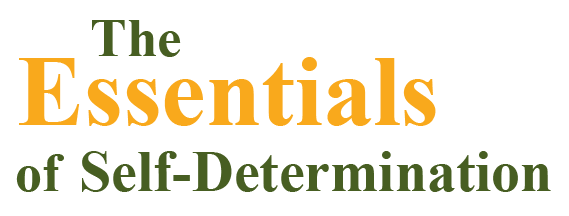Under the 2004 reauthorization of the Individuals with Disabilities Education Innovation Act (IDEA), states are required to report performance data across 20 special education performance indicators. Indicator 13 is how the states ensure IEPs are in compliance with the transition requirements. More Information NTACT:C offers a number of checklists to help you in your transition planning, including the NTACT:C Indicator …
High Quality WBL Programs
This session will help you and your partners develop key program elements for community-based work experiences and paid employment for students with disabilities. These elements are based on research-supported and promising practices from The Secondary Transition Work-Based Learning Program Assessment developed by TransCen and the Center for Transition and Career Innovation at the University of Maryland. At the end of …
Session 2 Summary
The Secondary Transition Work-Based Learning Program Assessment is a resource that can be used to help assess the effectiveness of the program. This assessment is not intended to be a compliance mechanism but rather a tool that can be used to gauge current practices and components, and to identify action steps and technical assistance needed for increasing opportunities for students …
Self-Determination University of Kansas
SelfDetermination.ku.edu is a website managed by researchers Mike Wehmeyer and Karrie Shogren at the University of Kansas, Beach Center on Disability, whose work focuses on secondary transition and self-determination. The two primary resources on the site are the SDLMI and the SDI. Self-Determined Learning Model of Instruction (SDLMI) The SDLMI was designed to teach students to self-direct their own learning …
Choosing Employment Goals
Choosing Employment Goals is part of the ChoiceMaker Self-Determination Curriculum, which is designed to teach students the self-determination skills they need to be successful in adult life. Choosing Employment Goals provides opportunities for students to identify their interests, skills, and limits in different transition areas. It also shows them how to use this information to develop goals and make life …
Materials and Resources
This session of the module is designed to allow you to view some sample pages of curricular materials to see how these materials fit within the Model of Self-Determination as well as to allow you to “try before you buy.” In Session 3, you will: Review examples from self-determination curricula, resources, and materials. From the curricula and resources provided, identify …
Environment
The environment component of this model is unique from other models of self-determination. The environmental context in which students express self-determination skills is critical to their success. Environmental context includes people, agencies, and places a student comes into contact with, and includes family, school, work, friends, and support staff. External factors play a role in how self-determined persons are able …
The Essentials of Self-Determination
This module will provide you with a general knowledge of self-determination, as well as a framework for providing self-determination instruction. You will learn about high-quality curricula and instructional resources to help you support students in becoming more self-determined. Before you dig into the module, watch this Youth Credo video from I’m Determined and consider your role in supporting students. Learning …
Linguistic Capital
Linguistic Capital: Social and intellectual skills realized through the common experiences of multilingualism. Culturally and linguistically diverse youth and families bring numerous language and communication skills to school and adult services. This could be through storytelling, visual arts, music, or poetry. Transition professionals should recognize and value the multiple social tools multilingual youth enact, such as translating for familial responsibility34 …
Stages of Collaboration
One way to keep your interagency team moving forward is to consider the group’s current stage of collaboration and identify areas in which the group can work more collaboratively. Interagency collaboration can vary from one team to the next, as it is often developmental: teams move through different stages before achieving high rates of collaboration. A team’s stage of collaboration …

